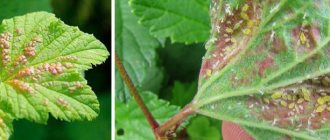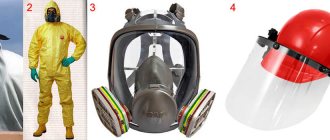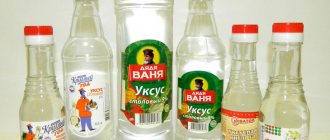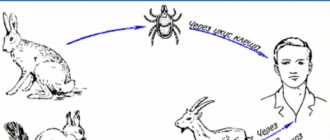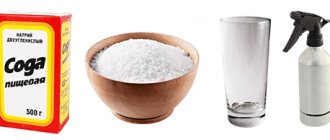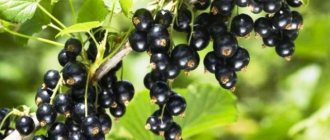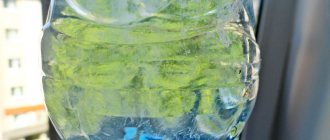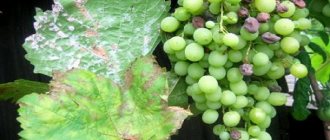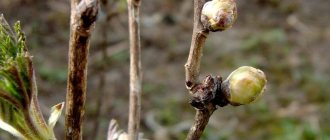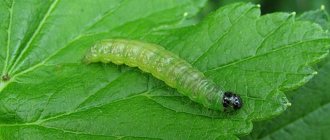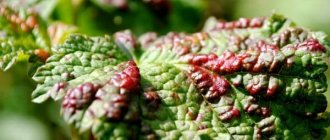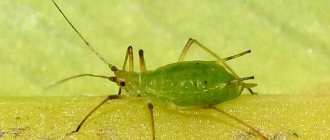The article describes in detail how baking soda is used against aphids: mechanism of action, recipes, method of application.
This may seem strange to you, but sometimes the most unexpected products are used to prepare fertilizers and to combat various pests. One of these products is baking soda - a proven and proven remedy. It not only effectively destroys insects, but also has a beneficial effect on plants, increasing their immunity, due to its bactericidal properties. You can treat fruit trees (apple trees, pears, plums), berry bushes (currants, raspberries), vegetable crops in a greenhouse (tomatoes, peppers, cucumbers) and in open ground (cabbage, dill), annual and perennial flowers (for example, roses) with soda ), as well as various indoor plants.
Why spray currants with soda?
Baking soda is perhaps the most affordable of all garden chemicals. The tradition of using sodium bicarbonate for treating garden plants dates back to the times of the Soviet Union, when, due to a total shortage, gardeners had to use for their needs not what was better and more effective, but what could be gotten in the store. This substance has always remained extremely cheap and accessible, but at the same time a very effective remedy.
Soda - gardener's assistant
You can use it on currant bushes for the following purposes:
- Reducing soil acidity.
- Prevention of the occurrence of certain fungal diseases.
- Control of certain types of insect pests.
- Enriching the soil with sodium, which promotes more complete absorption of nutrients by plant roots.
- Improving the taste of berries.
Important! Sodium bicarbonate is an absolutely safe and environmentally friendly product.
How to drive away ants
Aphids and ants live in symbiosis and bring a lot of trouble to gardeners. As long as there are ants on the site, it will not be possible to completely get rid of aphids. We are not talking about forest ants building anthills, but about their earthen brothers who do not form settlements visible to the eye. Ants take care of aphids, one might say, nurture them with all their legendary diligence.
- Sprinkle soda ash in areas where ants gather. If insects have settled in vegetable beds, sodium carbonate should be mixed with wood ash in a 1:1 ratio.
- Pour boiling water over the area sprinkled with baking soda. The alkali will react, and the insects will be destroyed along with the clutch of eggs. Sometimes this operation has to be repeated.
The benefits of soda to help black currants
In stores you can find 2 types of soda for sale: baking soda (sodium bicarbonate) and soda ash (sodium carbonate). The chemical formulas of these substances are very similar, but their properties have significant differences. Sodium bicarbonate is a food additive and is widely used in baking and cooking, while calcined one can only be used for technical purposes.
Calcified
Soda ash, when dissolved, is an alkali. It is useful to keep currant seedlings in such a solution for disinfection before planting. Sodium carbonate is used to spray bushes against various fungal diseases, such as powdery mildew and gray rot.
Soda ash is used only for technical purposes
It is also used to fight slugs by scattering powder between the rows. In addition, soda ash is an excellent remedy against aphids on currants.
Food
Baking soda, unlike soda ash, when dissolved in water gives a rather weak alkaline reaction. It is used for the same purposes as calcined. Sodium bicarbonate is used to treat currants against aphids and weevils, as well as against fungal diseases.
The design of this pack has not changed for many decades
In addition, currant bushes are sprayed with a soda solution to obtain a bountiful harvest.
What is the difference between baking soda and soda ash?
In appearance, baking soda and soda ash have much in common. Both substances are white powder, but differ in their chemical composition, properties and scope of application . The chemical formula of baking soda is NAHCO3. The product has a bitter taste and is widely used in cooking, as it is non-toxic to humans and has a pH value of 8.
Also find out how to treat gooseberries with soda against powdery mildew.
The main differences between soda ash and baking soda are listed below:
- chemical formula of the product is NA2CO3;
- the product belongs to hazard class III with pH=11;
- soda ash can cause skin irritation and burns of mucous membranes, so when using it you need to wear personal protective equipment - a gown, a respirator and rubber gloves;
- the drug belongs to technical means and cannot be used in cooking, but the modern chemical industry produces the E500 food additive from it.
How to dilute soda for processing currants
To spray currants, use a solution that contains 3 main components:
- soda;
- water;
- liquid or laundry soap.
The proportions of these substances may vary depending on the purpose of spraying. Here is the composition of the basic, most commonly used solution:
- Laundry soap – 50 g.
- Water – 10 l.
- Soda – 100 g.
Important! In order to quickly dissolve the required amount of laundry soap, you must first grate it or plan it into shavings, and then dilute it with a small amount of hot water.
Soda solution is an effective remedy for aphids on currants
To treat aphids and caterpillars on currants, mix 5 tbsp. l. baking soda and 30 g of liquid soap with 10 liters of water. The bushes are sprayed with this solution using a spray bottle or garden sprayer. Often an additional 200 g of wood ash is added to the tank mixture.
Another recipe for spraying currants, which includes iodine for feeding, is described in the video:
Powdery mildew
If the season is rainy and too cold, currant bushes are often affected by powdery mildew. The main symptom of the disease is a white or grayish coating over the entire surface of the leaf blades. To rid a garden crop of unpleasant symptoms, you need to add the following to 10 liters of water:
- 100 g sodium bicarbonate;
- 50 g grated laundry soap.
Spray the affected bushes generously with a thoroughly mixed solution once a week, preferably in the evening, until the symptoms of the disease completely disappear.
This method can be used when infection occurs during fruiting and chemicals cannot be used to treat fruit and berry crops. Also, a similar solution helps fight kidney mites.
How to spray currants with soda
All treatments of currant bushes with soda solutions are periodic and are usually repeated several times a season. Depending on the purpose of the work, the intervals between adjacent sprayings increase or decrease, and the quantitative composition of the mixture components also changes.
Rules for treating currants with soda against powdery mildew
Powdery mildew is a fairly common fungal disease that affects many garden crops. It appears as a thin whitish coating on the leaves, which then darken and rot. The spread of the disease is especially facilitated by humid weather and low air temperatures; such weather is typical for the central and northwestern parts of Russia.
Powdery mildew is a common fungal disease of currants.
To combat powdery mildew on currants, both baking soda and soda ash are used. The composition of the tank mixture when using these components is given in the table:
| Components | Food | Calcified |
| Soda | 10 tbsp. l. | 2 tbsp. l. |
| Liquid soap | 2 tbsp. l. | 2 tbsp. l. |
| Iodine | 1 tsp. | |
| Water | 10 l | 10 l |
All components must be well mixed. It is better to use a garden sprayer to process currants; this will improve the quality of work and reduce the consumption of the working solution. If you don’t have a sprayer, you can use a regular broom, dip it in a bucket of solution and evenly water the bushes. In this case, the quality of processing will be far from ideal and the consumption of the working mixture will increase significantly.
Important! Work on currant processing must be carried out in the evening or early in the morning so that the solution on the leaves does not dry out longer under the rays of the sun.
In a few days it will be possible to evaluate the result of the work done. If foci of infection remain, then the treatment of currants must be repeated.
How to treat currants against aphids with soda
To spray blackcurrant bushes against aphids, you can use a basic solution of baking soda, the preparation of which has already been described above. Soda ash can also be used to control this pest. Particularly effective is a working solution consisting of 20 g of soda ash, 20 g of onion pulp and 10 liters of water. The limitation of using such a mixture is the period of filling the berries. If there are less than 3 weeks left before harvest, then it is no longer worth using.
The appearance of aphids on currants can be detected by curling and changing leaves
Garlic can be added to the components of the soda composition for treating currants against aphids; it also significantly increases the efficiency of the work. In 10 liters of water you need to infuse 150 g of pre-chopped garlic for at least 6 hours. Then to this infusion you need to add 2 tbsp. l. soda ash (alternative - 10 tablespoons of baking soda) and 100 g of liquid tar soap. As a rule, a single application of such a composition is enough to get rid of the pest. If necessary, the bushes can be treated again after 5-7 days.
Spraying currants with soda for a bountiful harvest
Using soda enriches the soil with sodium, this helps currants more fully absorb nutrients and increases yield by about a quarter. However, these substances must be used with caution. An excess of more active sodium contributes to the leaching of less active, but vitally important for plants, calcium and magnesium from the soil, and their absence can lead to no harvest at all.
Soda is a guarantee of a bountiful currant harvest
Baking soda is used at the stage of planting seedlings, adding it in small quantities to planting holes. This measure not only protects the roots of the plant from pests, but also stimulates the seedlings to grow quickly. After flowering, currant bushes are treated with a weak soda solution, adding 30 g of powder per 10 liters of water. This stimulates the formation of new fruit ovaries and prolongs fruiting. In addition, foliar feeding of currants is carried out three times during the season, using a solution consisting of 10 g of soda per 10 liters of water. Spraying the crown with this composition stimulates the formation of lateral shoots and increases fruiting the following year.
Application
When used correctly, soda can act as a natural fertilizer for currants, a means to improve the chemical composition of the soil, and also an effective cure for diseases and pests . But it must be applied according to certain rules so as not to harm the plants.
Important! Soda acts as an oxidizing agent for metal, so you cannot prepare a working solution in a metal container.
Basic recommendations for the use of sodium bicarbonate for processing currants:
- Strictly follow the proportions of the product indicated in the recipe - exceeding the consumption rate of the substance can cause chemical burns on the leaves of the bushes.
- To prepare the working solution, you can only use warm water - the powder will not dissolve in cold liquid, and when the substance is added to boiling water, a strong alkali is formed, which can cause damage to the bush.
- The prepared mixture must be used within 2–3 hours after preparation so that it does not lose its beneficial qualities.
- It is recommended to process currants using a small hand sprayer, applying the mixture not only to the outside, but also to the inside of the leaves of the plant.
- When spraying a bush, you need to move from bottom to top so that the solution gets not only onto the surface of the crown, but also onto the lower part of the plant.
- You need to spray the liquid early in the morning or in the evening - if the mixture gets on currant leaves in direct sunlight, it can cause a chemical burn on the plant.
For tillage
Using soda you can reduce the acidity level of the soil. All varieties of currants need soil with neutral or weak acidity, since it is in such soil that the roots of the plant can develop normally, stimulating regular and abundant fruiting of the bush.
Important! Soda can be used as a weed killer - for this, prepare a solution of 5 liters of water, 2 tbsp. l. soda and 1 tbsp. l. liquid soap, and then spray the resulting mixture onto young vegetation at the base of the bush.
Basic recommendations for using the substance to treat acidic soil are listed below:
- After spring pruning of plants, while loosening the soil around them, 5 tbsp are added per 1 m² of area. l. soda
- In the spring, 2 weeks after the air temperature reaches above zero, 200 g of ash and sand, as well as 2 tbsp., are added to each bush. l. soda, and then water the plant with 2-3 liters of water so that the fertilizers are better dissolved in the soil.
- In early spring and autumn after harvesting, water the ground around the currant bushes with a solution of 10 liters of water and 1 kg of sodium bicarbonate - about 4 liters of the mixture are consumed per 1 m² of area.
- To achieve a reduction in soil acidity to a normal level, it is necessary to add soda using one of the indicated methods for 2–3 years.
Treatment and prevention of diseases, pest control
With the help of soda, you can effectively fight diseases and numerous pests of currant bushes. With the onset of spring, plants can be threatened by powdery mildew, rot, aphids and ants, causing significant damage to the crop. Soda helps prevent the spread of the problem and quickly eliminate the source of infection , and to increase the effectiveness of the mixture, auxiliary components are added to it - laundry soap, iodine, garlic, etc.
The most common folk recipes for a solution to combat diseases and pests of currants are listed later in the article.
In what other cases can you water currants with soda?
Spraying currants with a soda solution can be carried out not only for medicinal, but also for preventive purposes. This procedure strengthens the currant’s immunity, enhances the plant’s resistance to various diseases, and makes it resistant to pests. In early spring, currants can be treated against bud mites with a sodium carbonate solution. Some gardeners use this method as an alternative to traditionally treating shrubs with boiling water.
While the weeds are small, they can be destroyed with a soda solution
Using sodium carbonate, you can fight weeds at the initial stage of their growth. In this case, the root zone of the bushes is treated with a soda solution, for the preparation of which you need to take 1 tbsp for every 2.5 liters of water. l. soda ash. Good results are also achieved by using this substance as an alkalizing agent that normalizes soil acidity. In this case, the solution is prepared at the rate of 1 tbsp. l. baking soda per 1 liter of water. The root zone of the bush is treated with this composition twice per season, in spring and mid-autumn.
Meet the aphids
Science knows 4 thousand species of aphids, of which only a thousand destroy plants in Europe. This is little consolation, because voracious insects are extremely common; they feed on plant juices and infect them with viruses along the way.
The female aphid lays oblong black eggs on the bark and branches of plants in the fall, from which viable individuals emerge in the spring. The eggs are not afraid of snow or frost; they are “helped” by ants, who carefully drag the eggs underground and return them to their place when the young leaves hatch.
Living creatures can be destroyed when they reach the larval stage - the eggs are impervious to poison. If you spray the plants with baking soda during a period of increased gluttony and insect growth, you can kill all the aphids in the area. If you don’t fight the aphids, they will eat the entire garden and snack on the city - the female lays 100 eggs for the winter, each one will also hatch into a female and after two weeks she will lay a new batch of eggs. In the warm season, each one gives birth to up to 20 thousand hereditary pests.
The noble mission of pest control must begin with the removal of leaves and weeds from under the tree crowns. After this, you should whitewash the trunks with lime and copper sulfate or PVA glue, make sanitary pruning and begin spraying the plants until adult insects appear.
Advice from professionals
Gardeners have been using soda for quite a long time, so they have accumulated considerable experience working with this substance. Here are some tips to make currant processing more effective:
- Sodium carbonate, when dissolved, becomes a fairly strong alkali. When working with solutions of this substance, it is necessary to take all precautions and be sure to use personal protective equipment: rubber gloves, a respirator, safety glasses. If dissolved soda ash gets on exposed areas of the body, rinse them immediately with cold water.
The use of PPE when working with soda ash solution is mandatory - A very effective way to obtain a bountiful harvest of blackcurrants is a mixture of soda and yeast. To prepare it, you need to mix 100 g of baking soda with 500 g of baker's yeast dissolved in 5 liters of warm water. After a day, the total volume of the solution is brought to 10 liters by adding water, and then the currant bushes are sprayed. This procedure is carried out three times during the season: during the period of swelling of the buds, during flowering, after picking the berries.
Yeast and soda are the most effective fertilizer for currants - When working with any soda, you should not use metal utensils, since its solution enters into a chemical reaction with iron. It is best to use chemically neutral plastic, for example, ordinary construction buckets, to prepare mixtures for spraying currants.
When preparing soda solutions, do not use metal containers. - All compositions for spraying bushes are prepared the day before use. Over time, their effectiveness decreases significantly, since the active substance quickly decomposes.
- Using a small amount of vegetable oil in the mixture increases the effectiveness of currant treatment against fungal diseases. However, after such spraying, it can be difficult to wash the sprayer or sprayer from the oil film that has settled on the walls.
Gray rot
Gray rot can cause significant harm to currant bushes and destroy future harvests. To prevent this from happening, it is necessary to carry out preventive measures in early spring and spray the bushes with an aqueous solution of soda:
- 10 liters of water;
- 100 g food powder.
Expert opinion
We recommend!
Additional procedures include pruning and thinning of bushes, removing unnecessary growth and fertilizing with mineral fertilizers.
When planting young fruit and berry bushes, it is recommended to add 100 g of sodium bicarbonate to the prepared hole. The powder is not only able to protect a young plant from root rotting, but will also favorably influence its survival rate and further development.
Recommended for you:
How to use baking soda for bee and wasp stings
Precautionary measures
- You should wear rubber gloves when working with soda ash - the alkali can cause skin burns.
- If there are scratches or abrasions on the skin, gloves should also be worn when coming into contact with a solution of baking soda and soap.
- Alkali dries out the skin. After work, wash your hands well and lubricate them with cream.
- Try not to inhale vapors of dry sodium carbonate, so as not to irritate the mucous membrane of the nasopharynx.
- Do not store soda ash with food products, so as not to confuse it with food.
- Do not increase the recommended dosage to enhance the effect. An alkaline solution that is too concentrated will destroy the plants or reduce yields.
- With frequent spraying, there is a risk of damage to leaves on trees and shrubs.
- Excessive alkalization of the soil as a result of intensive control of aphids inhibits plant growth and negatively affects the harvest.
Recipes for solutions
There are several proven and effective recipes that summer residents use on their plots:
- Powdery mildew. Pour forty grams of calcined powder into a container, pour in a little water and add 40 grams of tar or laundry soap. Stir until smooth, pour into a backpack sprinkler, add 9 liters of water. You can use 4 tbsp. spoons of baking soda or 3 tbsp. dissolve tablespoons of calcined water in 10 liters of water and add 2 tablespoons of liquid soap;
- Rot. 3 tablespoons of food grade, dissolved in 10 liters of water, add a little of any soap solution;
- Aphid. For 10 liters of water, 4 tbsp is enough. spoons of sodium bicarbonate. Treat with soda solution again after 3 days.
This link will tell you about the description of the variety of Minusinsk tomatoes.
Currants do not like acidic soil, which is why they use an alkaline soda solution, which is poured under each bush.
Processing rules
Although sodium carbonates are considered safe compounds, careless handling of their solutions can be harmful to human health and plant health. When processing a garden or vegetable garden, precautions must be taken.
Rules for spraying to control aphids:
- The salt concentration in the solution should not be too low or high. In the first case, the insecticidal effect of the prepared product will decrease, in the second, the plant tissue will be damaged.
- A spray bottle is used for processing. The finer the spray it provides, the more evenly the solution will be applied.
- The entire plant is treated, including the lower surfaces of the leaves.
- Do not use sodium carbonate solutions in hot, sunny or windy weather.
- Treating flowering plants will repel pollinators.
- Precipitation washes away the protective liquid from plants. It is undesirable for rain to fall over the area within 24 hours after spraying.
- The best time for treatment is evening twilight or early morning if there is no dew.
- It will not be possible to defeat aphids if there are a lot of weeds in the area or if there are ants that contribute to its spread. Weeds and anthills must be destroyed.
- While working, you need to protect yourself with thick rubber gloves and goggles. If there are no special glasses to protect against chemicals, you can use sunglasses.
Caustic soda or caustic soda is sold in hardware stores. This substance is extremely dangerous, has a strong alkaline reaction and causes skin damage if it comes into contact with the skin. Caustic soda is not used to protect plants.
A sodium carbonate based product can be easily made at home from readily available ingredients. To make treatments more effective, they are carried out immediately after the pest is detected, before the colony has had time to grow. Soda solutions are effective for the prevention and destruction of aphids on various cultivated plants.
